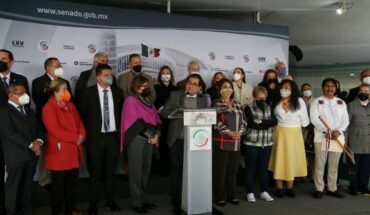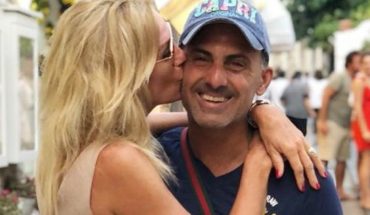After a year and a half since the first doses were administered, COVID-19 vaccines need to be updated to combat omicron subvariants, such as BA.1. BA. 4 and BA. 5.
Between September and October 2022, they are expected to be available, as planned by drug and pharmaceutical regulatory agencies such as Moderna and Pfizer, both producers of vaccines already approved and used on a large scale in much of the world.
“It is highly recommended and necessary that we have new vaccines,” considers pediatrician and infectologist Renato Kfouri, director of the Brazilian Society of Immunizations.
In practice, the process of updating dosages is more complicated of what was initially thought.
The main obstacle was the rapid and unpredictable appearance over the past year of new variants of Sars-Cov-2, the coronavirus responsible for the current pandemic. For example, when researchers were working on developing a vaccine to combat alpha and beta variants, the emergence of the delta had already become a problem.
The good news is that vaccines that are currently available and which are administered in three or four doses, depending on age group and health conditions, continue to protect against the most severe forms of covid associated with hospitalization, intubation and death.
The BBC spoke to various experts to understand the setbacks and possible solutions to increase the protection of people against covid-19 in the future.
Inevitable stages
In December 2020, when the first vaccines were about to be ready, one of the most circulated information had to do with the eventual ease of updating doses.
“At the beginning it was said that such a process would be very fast, that in about 20 days you could have new vaccines,” recalls physician and epidemiologist Denise Garrett, vice president of the Sabin Vaccine Institute in the United States.
“As time went on, we saw that it wasn’t quite like that.”
The process to make the modifications in the original formulation is not so complicated. In mRNA vaccines, such as those of Pfier and Moderna, or in those of viral vectors, such as those of AstraZeneca and Janssen, it is enough to modify the sequence of genes that “teach” our own organism to produce the S protein, a spike-like structure that sits on the surface of the coronavirus and adheres to the receptors of the cells to initiate infection.
New versions of the virus are increasingly infectious and capable of eluding the immune response.
It should be remembered that the first generation of vaccines was developed from the “original” virus, detected in Wuhan (China) at the end of 2019.
The spike (protein S) is the part of the virus that has undergone the most genetic mutations as new variants appear.
The processing of “editing” the gene sequence in the vaccine is simple and can be done in the laboratory in a few days.
But it is precisely in the next stage where the biggest obstacles appear.
“Modified vaccines must go through clinical trials to see if they work, if they cause any immune responses and if they are equally safe,” says Dr. Sue Ann Costa Clemens, director of the Oxford-Brazil Vaccine Group in the United Kingdom.
“If all those results are satisfactory, we would enter the regulatory phase in which countries analyze the data and decide if the vaccines will be available for use,” adds the specialist, who is also head of the Institute of Global Health at the University of Siena, in Italy.
At best, if the process is done quickly, it takes at least a few months to complete. Not counting the time it takes to produce and distribute the millions of doses of the product.
The main issue is that the coronavirus works at a completely different speed: since the appearance of the omicron variant at the end of 2021, in a few months several subvariants have emerged even more infections and with the ability to elude the immune response.
Only in the first half of 2022, the world saw how BA.1 (the first subvariant of omicron) was followed by the subvariant BA.2 and, recently, by the dominant subvariants BA.4 and BA.5.
Vaccines that are currently available protect againstmore severe symptoms.
In addition to this lag, the new versions seem to have more ability to escape the immune response as a result of vaccination and previous covid infections. In fact, the number of people who are being reinfected for the second or third time is increasing with each passing day.
But what will come next? What will be the future variant or subvariant to worry about? No one knows the answer.
How do we solve this equation?
We have a problem both in the short term and in the long term. In the coming months, regulatory agencies and pharmaceuticals should discuss how to speed up that testing and approval process to expand immunity of the people most susceptible to the effects of covid-19.
In this line, the U.S. Food and Drug Administration (FDA), it seems to have taken a first step.
At the end of June, representatives of the agency determined that the booster doses to be used in that country from autumn (end of September for the northern hemisphere), they should have some kind of protection against the subvariants of Ormicron, preferably against BA.4 and BA.5.
Even before this announcement, pharmaceutical companies were already working to update their products. For example, Moderna announced that it was testing a vaccine capable of protecting against the “original” coronavirus and also against the subvariant BA.1.
The latest results released by the company, which have yet to be reviewed by independent researchers, indicate that the new version of vaccines Bend the production of neutralizing antibodies against BA.1 compared to older doses.
In order to anticipate the strains that will predominate each season, it is necessary that the virus stabilizes.
Pfizer is also advancing an updated BA.1 vaccine and the first data the company has compiled also indicates an increased immune response.
The two labs say they are working on specific formulas to expand protection against the SUBVARIANTS BA.4 and BA.5. In this case, this is still at an early stage and the previous results may take a while to see the light.
Regardless of how this process is going to unfold in the coming months, there is a consensus around finding a way to diminish the advantage of the virus in this race, so that the doses used in the next vaccination campaigns are closer to the variant that is in circulation at that time.
“What we need is that the Coronavirus vaccination is somewhat similar to what we currently have for the flu, for which the health authorities analyze and determine the strains that are likely to circulate with greater intensity in each season,” Garrett proposes.
“From there it would be possible. produce vaccines without the need for longer clinical trials and with the entire regulatory approval process“He adds.
However, for this scenario to be a reality, it will be necessary for the circulation of the coronavirus to stabilize.
“We are facing an unpredictable scenario, in which we cannot yet predict which variant will circulate in the coming months,” says Kfouri.
Looking to the present with a view to the future
Experts understand that the use of bivalent vaccines, that is, they protect against the “original” virus and also against the omicron variant, as the pharmaceutical companies propose, can help solve the problem in the short term. But the future of vaccination necessarily involves more comprehensive solutions.
“We have to change our strategy. It is no use simply adapting vaccines with each new strain that emerges.“Notes Clemens, who is also a senior advisor to the Bill and Melinda Gates Foundation.
“We need to develop solutions capable of protecting us not only from Sars-CoV-2, but from the entire family of coronaviruses, which have the potential to cause other pandemics in the future,” adds the researcher.
Creating new vaccines is a very high-risk and very expensive business.
These projects, which include technologies such as nanoparticle vaccines or solutions applied by the nose, are still at a very early stage and you won’t see stronger results for another year or two.
Garrett talks about the need topour massively into this type of research. “Creating vaccines is a very high-risk business. The chances of one that works well and is approved is around 7% on average,” he calculates.
“As we are talking about something very risky and very expensive, governments have to make a high investment with pharmaceutical companies. Because without an incentive, these companies alone won’t take the risk.“He says.
To get an idea, the government of The United States invested US$18.000 millions in Operation Warp Speed, which served as the basis for the development of vaccines and treatments against covid-19 and helped in the creation of the Janssen, AstraZeneca and Moderna vaccines.
Until all these ideas become a reality, it is important to follow the guidelines of the health authorities and be up to date with vaccination.
After all, as mentioned above, the doses we currently have continue to protect in most cases against the most serious symptoms and that can lead to hospitalization, intubation or even death.





